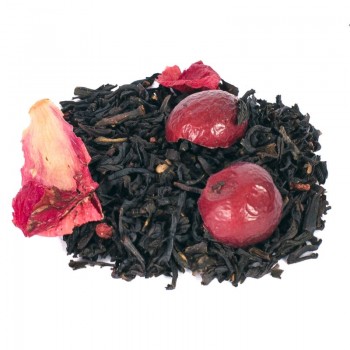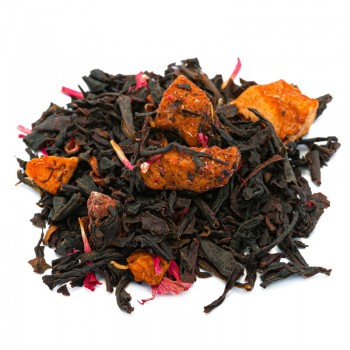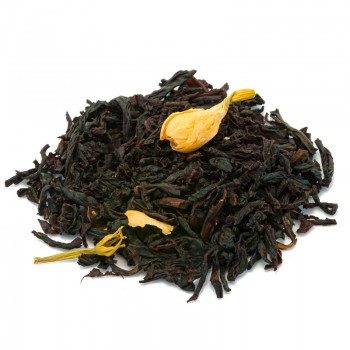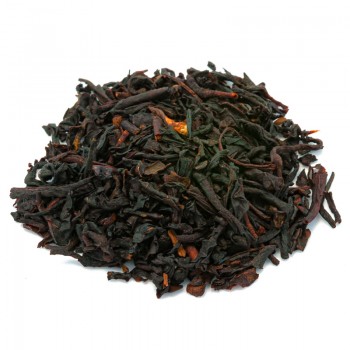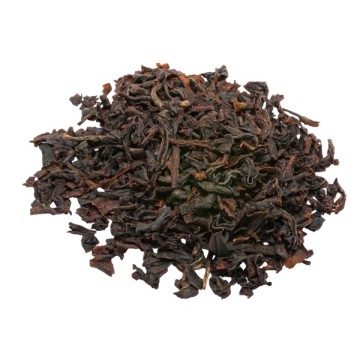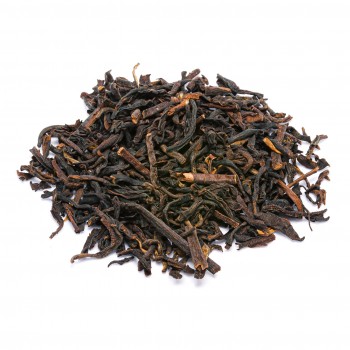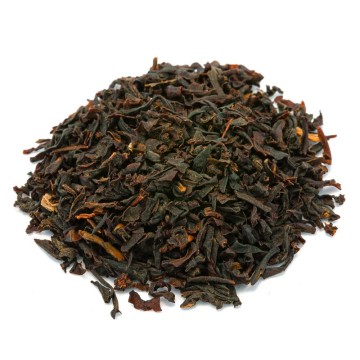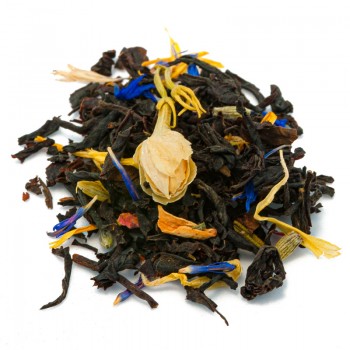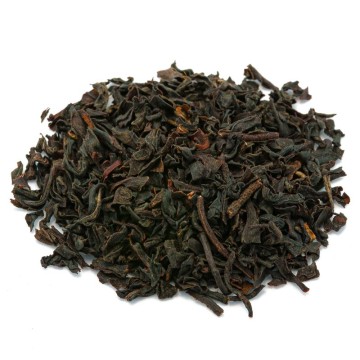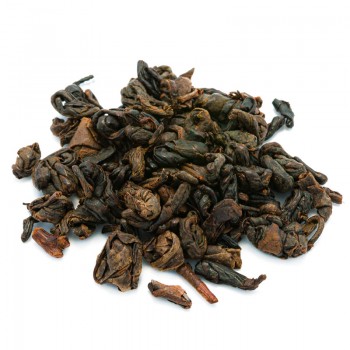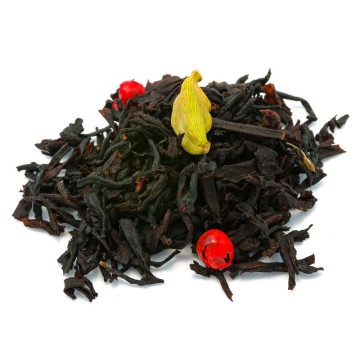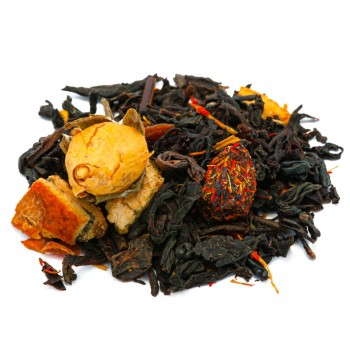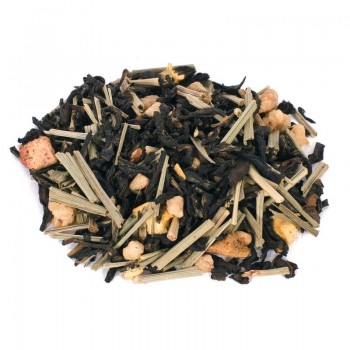Darjeeling tea: unique taste and aroma. Why is Darjeeling so prized? It is considered one of the most prized teas for its unique and interesting qualities. It is a Chinese tea transplanted to India, grown in the fresh air of the Himalayas, with flavors reminiscent of Muscat grapes. This blend of exceptional characteristics is revealed in the taste, which is more similar to wine than other teas. For this reason, it is often called the "Champagne of teas," due to its sweet-musky tasting notes similar to wine and its fruity essence reminiscent of French tea. A distinctive aftertaste can evoke delicate vegetal, fruity, and citrus flavors. Darjeeling tea offers a complex aroma, rich in aromatic compounds with an intense, intoxicating floral scent, much loved by tea connoisseurs. Its special profile comes from the combination of small-leaf Chinese tea with the Indian terroir of Darjeeling, which benefits from the fresh mountain air, fertile soil, and ideal climate. This black tea is a regional specialty and, unlike other teas, is less oxidized due to its lower exposure to sunlight at the foot of the Himalayas. The partially oxidized leaves, which are less dark in color, yield a light infusion, with a slightly astringent sensation and a light color. It's worth sipping it to discover its "secrets."
Darjeeling Tea Properties and Benefits
A cup of Darjeeling tea offers, beyond its flavor and aroma, several beneficial properties for our well-being. First of all, this tea is rich in antioxidants thanks to the soil in which it is grown. The tea plants that grow in this region, at the foot of the Himalayas, absorb nutrients and minerals that are beneficial to the body. Specifically, its antioxidant properties are due to polyphenols and flavonoids, compounds important for reducing the oxidation and aging process of cells.
Darjeeling black tea also contains a significant amount of caffeine, higher than other types of Indian black tea. This property is useful as an energy boost, increasing concentration and attention, and reawakening vitality, especially if you drink a cup of Darjeeling black tea in the morning. Its effect is not overly stimulating and immediate like that of coffee; it stimulates energy in a balanced way and allows it to be released throughout the day. This black tea, therefore, is suitable as a tonic and invigorating drink, combating physical and mental fatigue. What are the benefits of Darjeeling tea for your diet? It promotes weight management thanks to its stimulating effect on the metabolism and mechanisms that reduce the absorption and accumulation of lipids (fats).
Furthermore, the taste and aroma of Darjeeling tea leaves can calm hunger pangs, an important part of a balanced diet, and also improve mood. Like all teas, black Darjeeling is low in calories and can aid weight loss when used as a replacement for higher-calorie beverages to improve your diet.
On a digestive level, black tea promotes normal intestinal function and the development of healthy bacteria in the gut microbiota. Caffeine accelerates intestinal transit, helping to absorb heavy meals; it also has a mild laxative effect that helps combat constipation. Furthermore, black tea promotes the drainage of body fluids and diuresis, helping the body expel toxins and excess salt. Its diuretic effect counteracts bloating caused by water retention.
Nutritional Values of Darjeeling Black Tea
It contains antioxidant components such as polyphenols—flavonoids, catechins, flavanols—and nutrients such as B vitamins, enzymes, and minerals (zinc, calcium, magnesium, and potassium). It provides tannins and amino acids, including L-theanine, and alkaloids including caffeine (theine) and theophylline.
How to Drink Darjeeling Tea
To prepare a cup of Darjeeling black tea (250 ml), steep about 3-5 grams of tea in the cup when the water has reached a temperature of 90-95°C. Let steep for 3 to 5 minutes before drinking.
How to buy our loose Darjeeling tea online?
In our Natura d'Oriente tea e-shop, we have selected high-quality Darjeeling tea from the plantations of this Indian region, perfect for tea connoisseurs and enthusiasts. Our selection of loose black tea online allows you to get Darjeeling at a great price, in convenient, freshness-preserving packs of 25g, 50g, 75g, 100g, 150g, and 300g.
Where does Darjeeling black tea come from?
Most of the tea plants in Darjeeling are of the smaller-leaved Camellia sinensis var. sinensis, which is less commonly grown in India, where tea from the long-leaved Assami variety is produced.largest tea plant. This is due to its history, as tea was first grown in the Indian region of Darjeeling by importing seeds from China. They were sent to the British physician Campbell, who began cultivation in this area in 1841. As early as 1847, the government established the first nurseries, which expanded over time to establish larger commercial cultivations of this tea.
Where is Darjeeling located? To understand the characteristics of this black tea, it is necessary to know this particular region of northeastern India. It is located in the northern part of West Bengal, bordering Nepal, Bhutan, and Bangladesh. It is a plateau region, famous for being located at the foot of the first foothills of the eastern Himalayas, which also includes Mount Sandakfu, over 3,600 meters high. The Indian name Darjeeling, literally translated, means "thunder region" or "land of lightning"—referring to the frequent rainfall in the high mountains.
Due to the cold climate and scarce agricultural land, tea plantations in this region are difficult and rare, but they yield tea considered the finest in India. It enjoys special conditions in spring and summer, when the increased heat, rainfall, and cool, misty evenings favor the growth of the tea plants in the limited fertile soil available. However, different types of tea exist based on their altitude, between 600 and 2,000 meters above sea level. This is why Darjeeling tea is so famous. Its "charismatic" flavor comes from particular climatic conditions, soil chemistry, and temperature.
To achieve its unique flavor, however, Darjeeling tea leaves are processed in a special way. This highland tea originates as a black tea, as most Darjeeling tea leaves are oxidized, though not completely. However, semi-oxidized oolong and green teas are also produced in the region. To enhance its value, some Darjeeling teas are produced as a blend of leaves treated with different levels of oxidation (green, oolong, black).
Furthermore, the same plantation can produce Darjeeling tea leaves with different flavors depending on the time of harvest. Periodic harvests (flushes) mark the tea growing season, along with the rains, and from the first to the last harvest, the flavor ranges from light and delicate to robust and full-bodied. The first flush from the plant is highly prized, with young leaves and soft, delicate flavors, fresh notes, and high-mountain aromas. Furthermore, First Flush teas have a satisfying balance of sweetness and astringency, which is often difficult to find.
When sipping, it's good to know that Darjeeling tea is grown and processed only in defined geographical areas of the region, by growers and processors certified and registered with the Teaboard of India. These are all characteristics that distinguish it from other types of black tea.
Darjeeling black tea: what are the contraindications?
Although tea consumption is considered safe for adults, drinking excessive amounts can cause adverse effects due to the caffeine content. Excessive intake of caffeine and the tannins contained in tea can be harmful, causing agitation, heartbeat changes, insomnia, nausea, diarrhea, stomach pain, and gastritis. Additionally, caffeine can interfere with some medications related to heart disease or insomnia, so it's best to consult your doctor and keep your intake to moderate levels (1-2 cups per day).

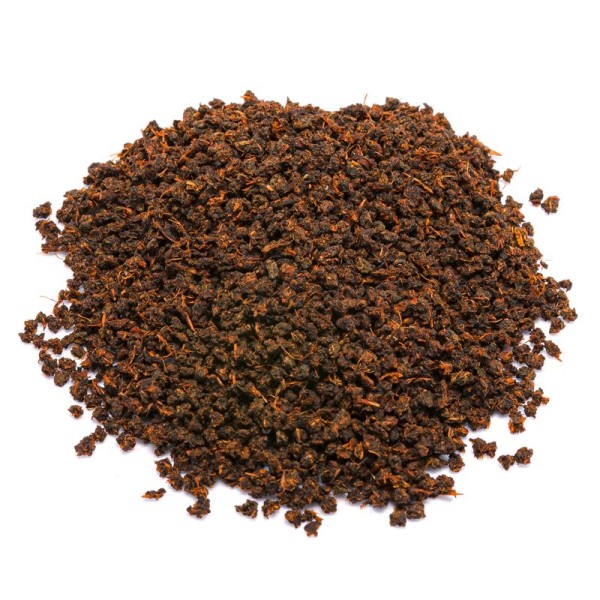









 No reward points for this product.
No reward points for this product.
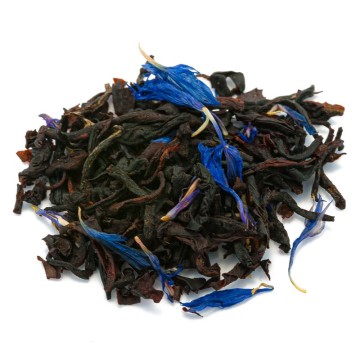
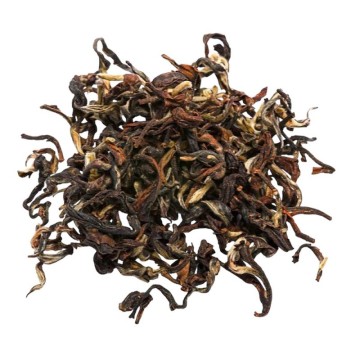
![Black tea Honey Black Formosa [Natura d'Oriente]](https://www.naturadoriente.com/3390-home_default/black-tea-honey-black-formosa-.jpg)
